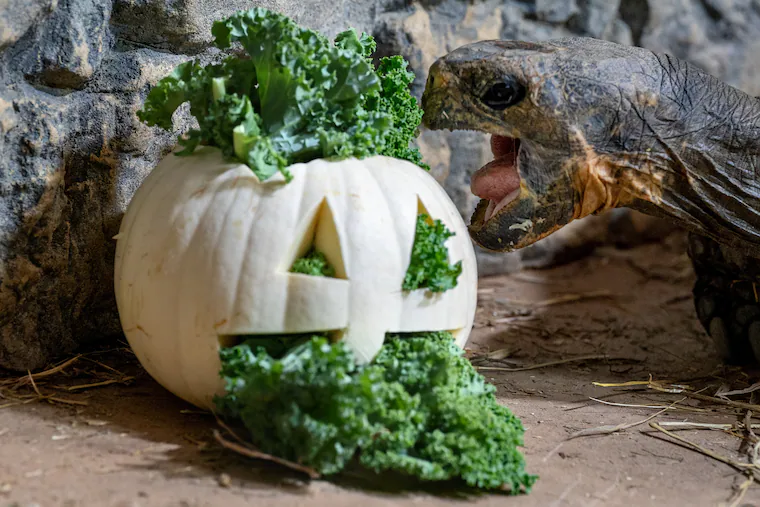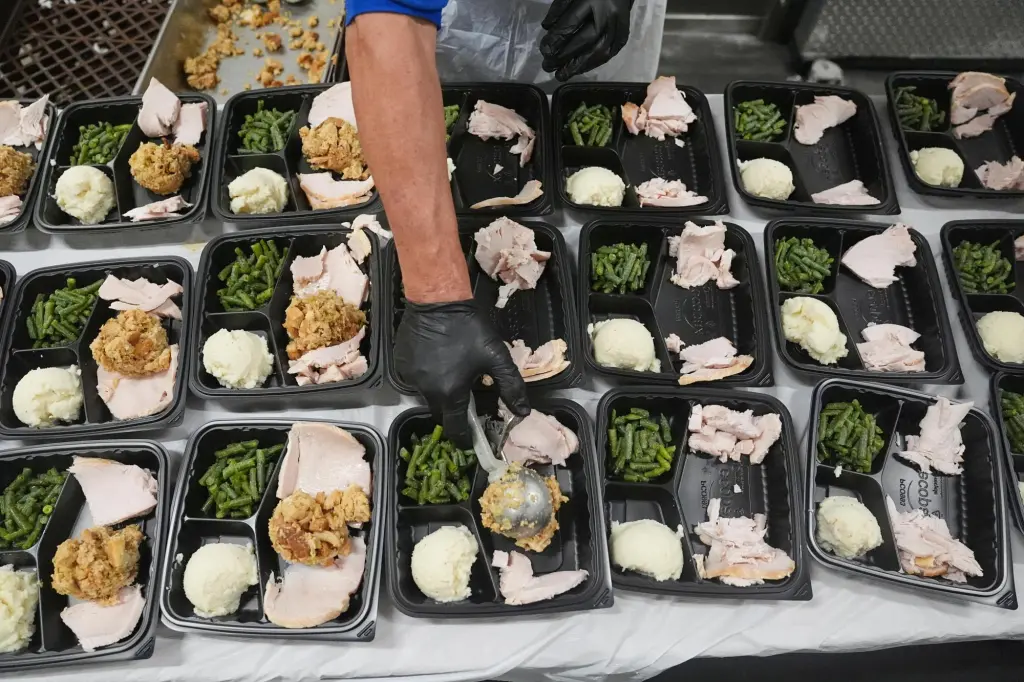Copyright The Philadelphia Inquirer

When Cindy the hippopotamus emerged from her moat inside the Philadelphia Zoo around 3 p.m. Tuesday, she immediately knew what to do. Though zookeepers refer to 36-year-old Cindy as the diva of the hippo enclosure, she was extra patient as she stared up, mouth closed and eyes smiling, at the white pumpkin waiting to be dropped into her mouth. As if on command, Cindy unhinged her jaw to receive the delectable gourd, crunching it in two. When she was done, Cindy opened her mouth like a child who wants to prove to their parents that they ate their vegetables. Remnants of pumpkin guts flecked her teeth. It was a picture-perfect moment. Year after year, videos of zookeepers feeding pumpkins to hungry, hungry hippos at the Philadelphia Zoo go viral, earning millions of views and the types of comments typically reserved for videos of cats behaving badly. “If so dangerous, why so cute?” reads a comment under a TikTok of the zoo’s hippos munching on pumpkins that has been viewed over 603,000 times since it was posted in 2023. Others “just want to be a hippo eating a pumpkin” or to rent one for Christmas. “Everybody on social media really likes it when we feed the [animals] pumpkins,” said Cierra Allen, an animal care specialist with the Philadelphia Zoo. “The number one thing people come to the zoo for is to see the animals eating snacks.” The pumpkin feedings are often over in seconds, but they are the product of weeks of deep planning, said nutrition operations manager Abigail Ely, who sources the gourds and ensures they align with each wild animal’s specific dietary needs. The autumnal snack times are part of the zoo’s annual Boo at the Zoo programming, which this year included three weekends of trick-or-treating, plus a costume parade and minigolf. The zoo has been feeding pumpkins to its animals since at least 2015 as a form of sensory play. The hippos, for example, can probably tell that the pumpkins are a big deal. “The texture is different … it’s giving them something to really work their jaws on,” said Christine Higbie, the zoo’s senior director of animal health. “It’s a really fun, different, and interesting thing [as opposed to] the heads of romaine lettuce and hay” that the hippos are fed daily. Pumpkin season started at the zoo in late September, when Ely and her team began receiving weekly donations from Riverwards Produce, the boutique Fishtown and Old City grocer best known for its Erewhon smoothie dupes and farm-fresh vegetable selection. The zoo, Ely said, can’t be picky about everything: Some years, they’ve received otherwise healthy pumpkins speckled with moss green warts. This year’s deliveries of about 150 pumpkins total were entirely composed of white pumpkins instead of Halloween-y orange ones. The hippos do not care. Still, the gourds are organic. Nothing but the best for our dear diva Cindy. “We bring in restaurant-grade produce,” said Ely. A feast fit for tortoises, vultures, and jungle cats Unfortunately for Cindy, the hippos aren’t the only animals at the zoo feasting on pumpkins. The zoo also hands them out to its tortoises, fruit bats, primates, jungle cats, and birds, among others. Not all of them can enjoy the freedom of chomping on pumpkins the way Cindy does. For smaller animals, the nutrient- and calorically-dense gourds have to be swapped with something else in their diets and rationed. “It’s kind of like Weight Watchers points,” said Allen. “We’re counting all their calories.” And for others, like primates, pumpkins are off-limits since their GI tract and gut microbiome can’t digest them. The zoo’s vultures use the pumpkins like a “puzzle feeder,” explained Higbie, carefully pulling apart bits of horse meat that zoo keepers mix into the stringy bits of pumpkin innards. “It’s like picking apart a carcass,” she said. The zoo’s quartet of Aldabra and Galapagos tortoises have the closest experience with pumpkins to Cindy, each getting three pumpkins a week during October. But where Cindy gets whole pumpkins, the tortoises are fed flat slices. The shape is important. “I don’t know if you’ve ever seen a video online of a turtle or a tortoise eating something circular, but it usually ends up rolling away,” said Allen. During Tuesday’s feedings, Wilma the Aldabra tortoise struggled to get her mouth around the decorative jack-o’-lantern her caregivers stuffed with kale. Every time the 284-pound reptile was within chomping distance, it would shift just out of her grasp. Elsewhere in the enclosure, the Galapagos tortoise dubbed Mommy was squirreling away pumpkin slices. Mommy — a 284-pounder who arrived at the zoo in 1932 — is estimated to be at least 97 years old, and thus, the oldest animal in the zoo. Her status as the de-facto matriarch, it seems, makes her bad at sharing. Wilma, 54, is the best sharer, nudging pieces toward her companions, Little Girl and Betty, estimated to be 85 and 54, respectively. When they’re finally able to take a bite, it looks like they’re smiling. “I think they really do know the pumpkins are a special treat,” Allen said.



